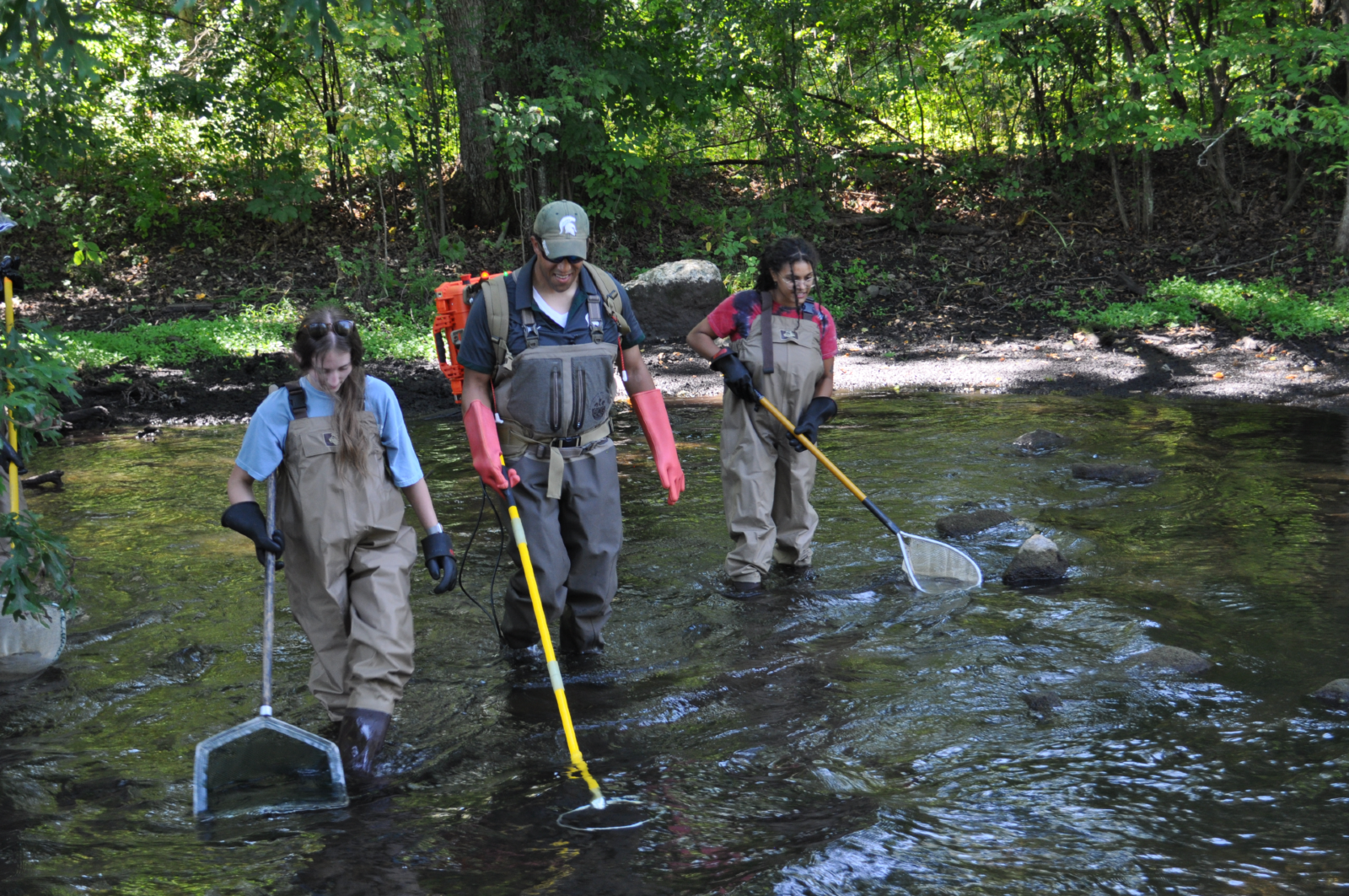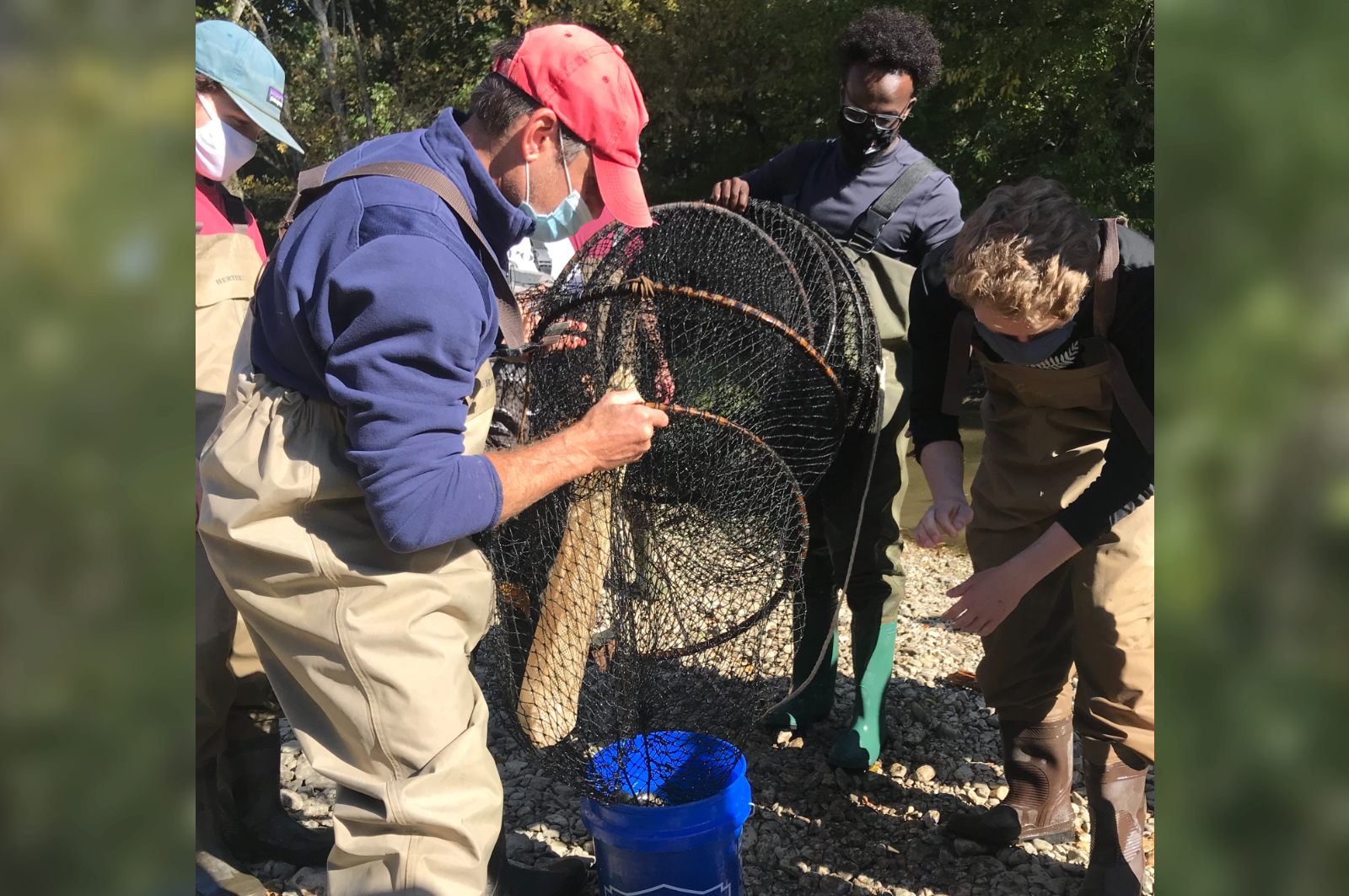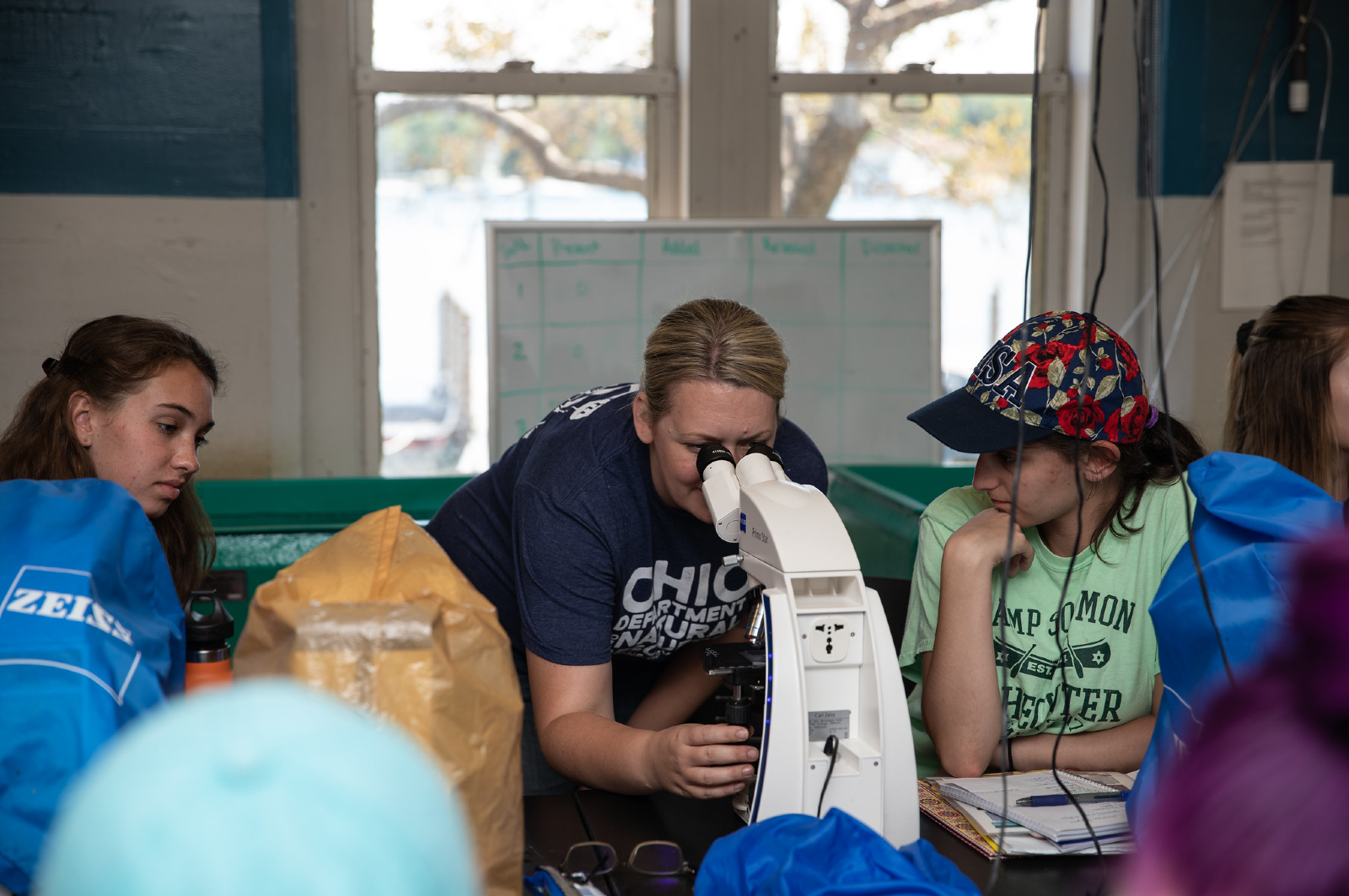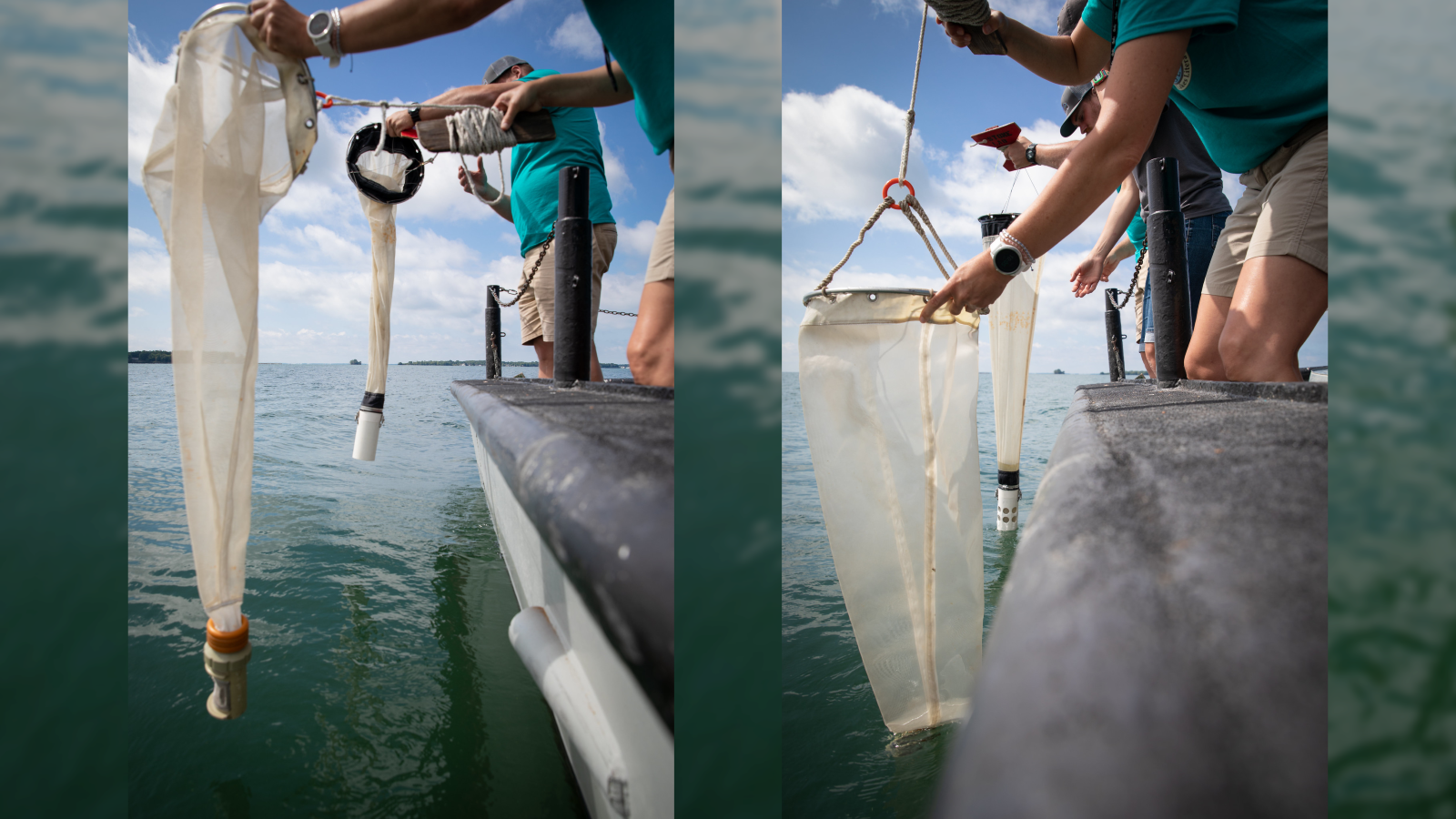Fisheries Science in Photos
Explore the gallery below to see fisheries science in action. All of the photos show some aspect of fisheries science, and many of them show our workshop coordinators at work.
FST Workshop instructor Brian Roth electrofishing in a stream with students.
Electrofishing is a process of fish collection in which fish are stunned by an electrical field created in the water. Electrofishing can be done in many water bodies, though it works best in shallower systems (streams, ponds, reservoirs, lake edges, etc.).

FST Workshop coordinator Stu Ludsin emptying a hoop net with students.
Hoop nets and other trap nets are a passive method of fish collection, in which a net is set and left for some time period (often overnight) and then checked for fish. Hoop nets consist of a series of funnels that terminate in the cinched "cod end" of the net. When fish enter the funnels, they are unlikely to find their way back out of the net. The fish collect in the cod end and can then be emptied into a sample bucket. Hoop nets and other trap nets can be used in many water bodies, though they work best in shallower systems (streams, ponds, reservoirs, lake edges, etc.).

FST Workshop coordinator Kristen Fussell showing students how to use a microscope to analyze their samples.
Microscope work is important in a great deal of aquatic ecology sample processing. For example, microscopes are used to analyze lower food web samples including phytoplankton and zooplankton. Microscopes are also used when identifying aquatic insects from samples collected in streams, wetlands, and lake bottoms. Importantly, microscopes are necessary to determine the species of larval fish.

FST Workshop coordinator Chris Winslow preparing a zooplankton net for a tow in a demonstration at Stone Lab.
Zooplankton nets are long, cone-shaped nets that end in a "cod end" that often has a cup attached. These nets have a very fine mesh that traps all but the tiniest organisms inside. Hoses and squirt bottles are used to rinse all of the sample collected into the cod end, which is then rinsed into a sample cup for analysis under a microscope. Zooplankton serve as an important base of the food web for very young fish (larvae) and other organisms.




FST Workshop Contact Information
Email: pfaff.20@osu.edu
Research Center Building
1314 Kinnear Rd.
Columbus, Ohio
